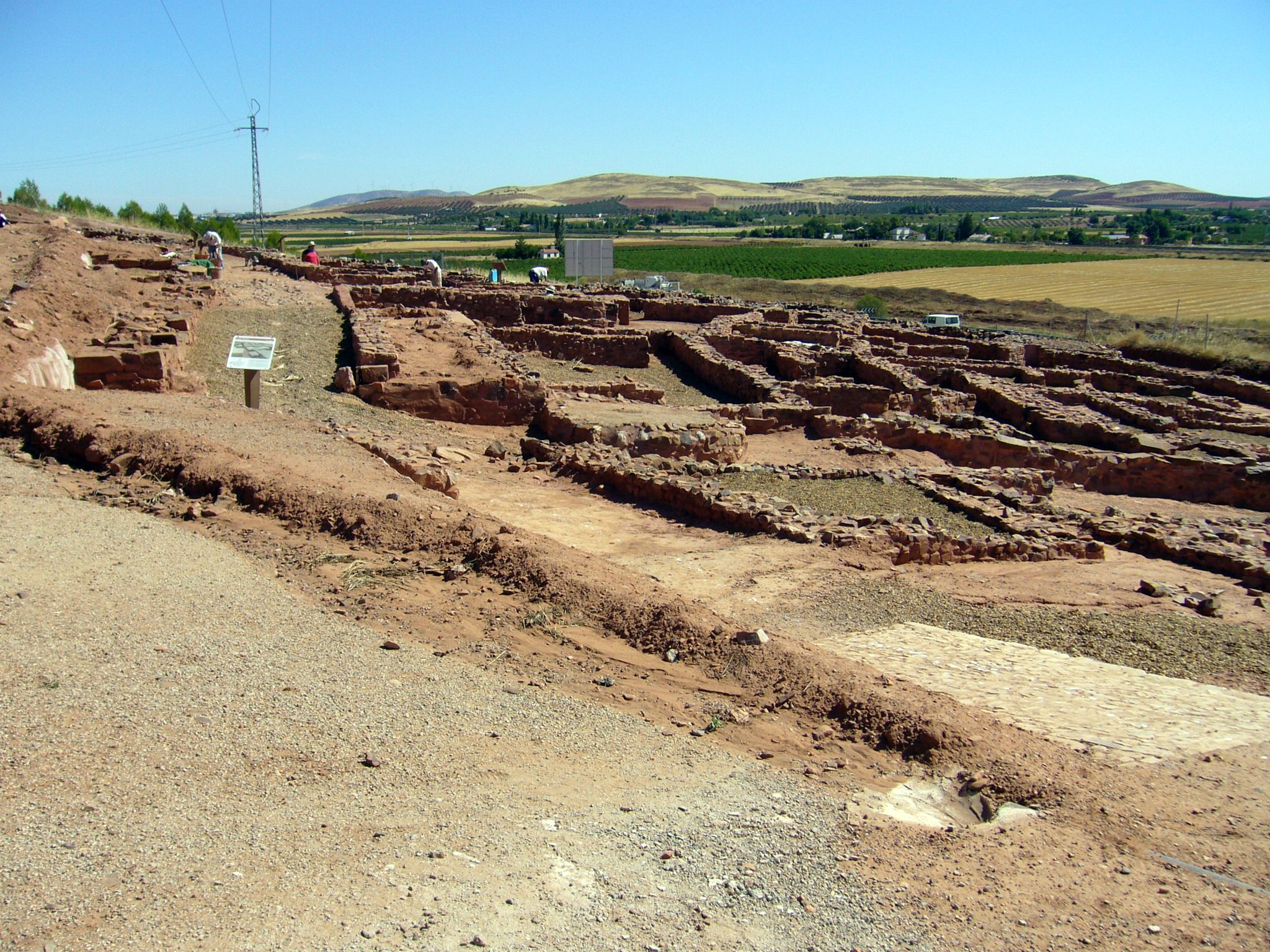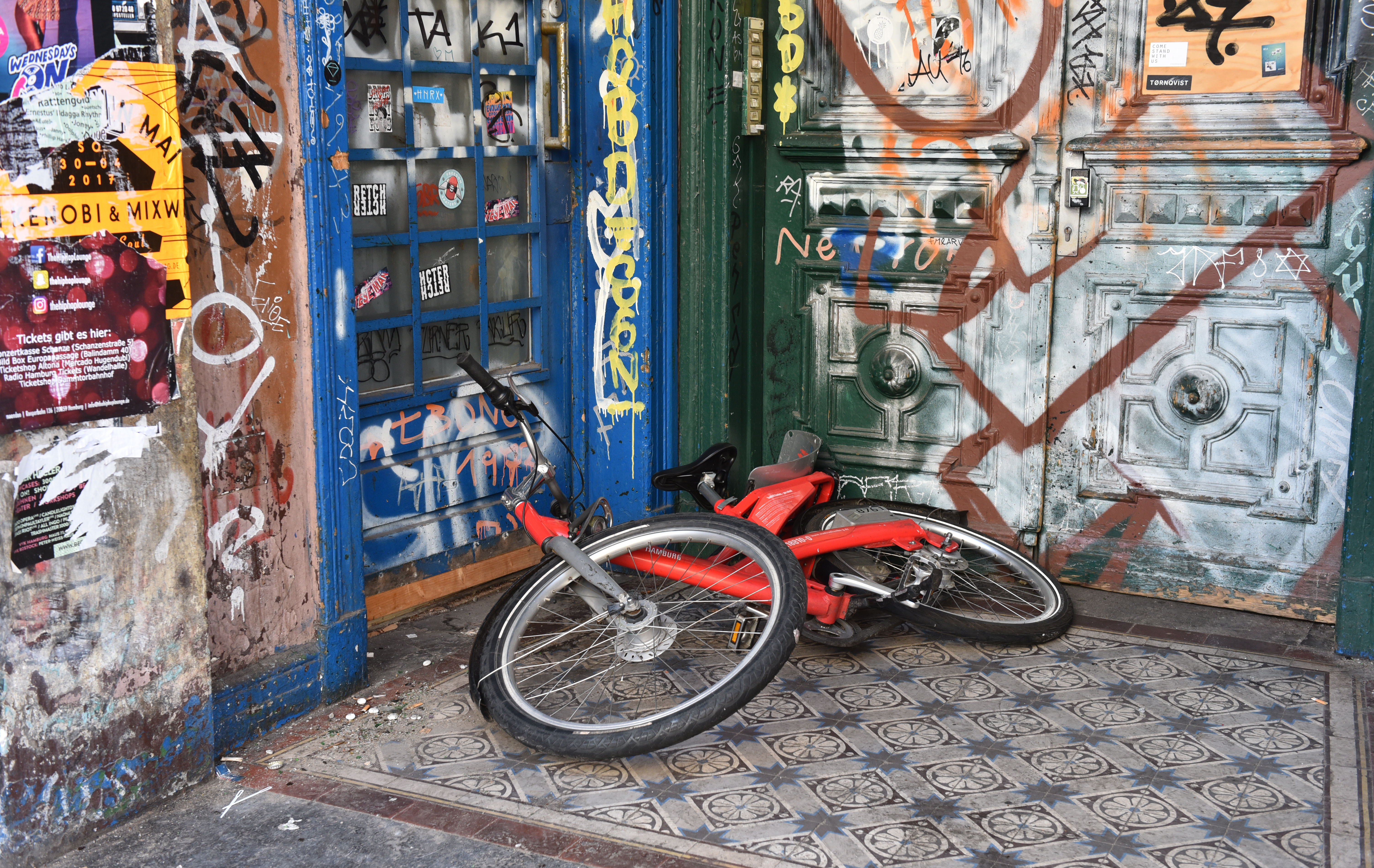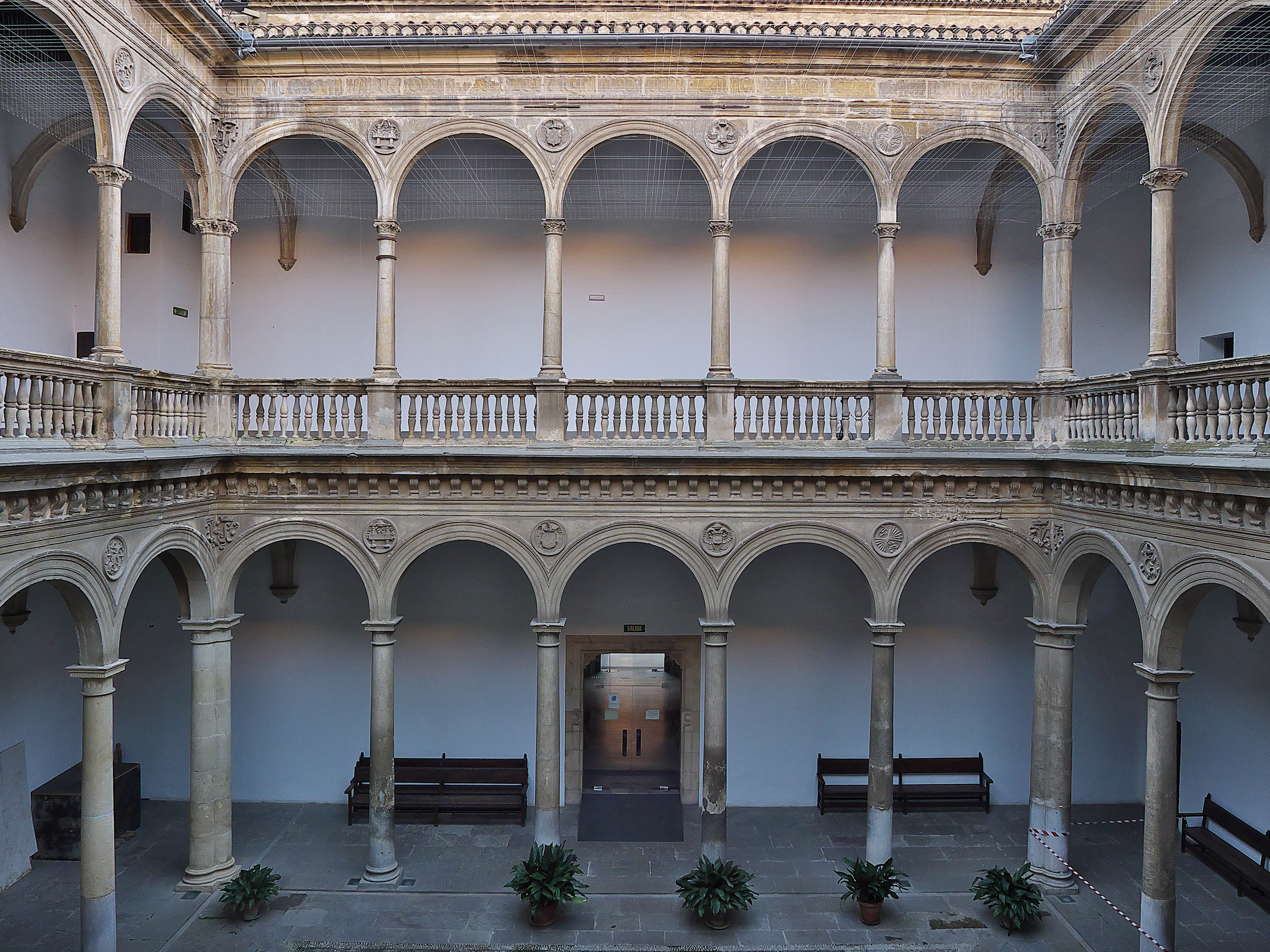|
Angel Of Victory (Valdepeñas)
The ''Angel of Victory and Peace'' () or ''Angel of Victory'', also referred to by some as ''Ángel del Fascismo'' ("Angel of Fascism"), is a ruined monument in Valdepeñas, Spain. It was a Francoist memorial designed by Juan de Ávalos that consisted of a colossal statue of an angel holding a sword. The monument was made of a reinforced stone sided by two poles. It was partially destroyed in 1976. History and description The Provincial Deputation of Ciudad Real commissioned the project to build the monument and awarded it to Juan de Ávalos. The site chosen for the erection of the monument is located two kilometres away from the city of Valdepeñas in the province of Ciudad Real. It stands at the top of a hill, the ''Cerro de las Aguzaderas'', visible from the Manchegan plain and the Madrid–Cádiz national road (currently superseded by the A-4 highway). Unveiled in 1964, the sculpture consisted of a 15-metre high angel holding a blade-like cross sided by two 25-metre hig ... [...More Info...] [...Related Items...] OR: [Wikipedia] [Google] [Baidu] |
Valdepeñas
Valdepeñas is a municipality in the province of Ciudad Real, in the autonomous community of Castile-La Mancha, Spain. It is also the seat of the judicial district that covers the localities of Moral de Calatrava, Santa Cruz de Mudela, Viso del Marqués, Torrenueva, Castellar de Santiago and Almuradiel. Developed in the 13th century under the auspices of the Order of Calatrava, its emergence is connected to the depopulation of the nearby settlements of Santa María, Aberturas, and Corral Rubio. It possesses a traditional wine industry. It lies on the road ( A-4) and rail ( Alcázar de San Juan–Cádiz railway) route traditionally connecting the Meseta Central with Andalusia through the Despeñaperros Pass. Geography Its name means "Valley of Rocks", because it is located in a wide hilly area surrounded by a meander of the Jabalón River, just bordering on the plain south of La Mancha, and the subsoil is rich in limestone rock. It is located in the Campo de Calatrava, ... [...More Info...] [...Related Items...] OR: [Wikipedia] [Google] [Baidu] |
Blas Piñar
Blas Piñar López (22 November 1918 – 28 January 2014) was a Spanish far-right politician. Having connections to Catholic organizations, during the Francoist dictatorship he directed the Institute of Hispanic Culture (''Instituto de Cultura Hispánica'') and served as ''procurador'' in the Cortes and as national councillor (1955–1977). He later became a member of the Congress of Deputies in 1979. He led the far-right New Force and National Front political parties. Biography Piñar was born in Toledo. He was a law student in Madrid when the Spanish Civil War broke out and took refuge in the embassies of Finland and Paraguay, later doing work as a clandestine "fifth columnist" for the Nationalist forces. From 1957 to 1962, he was in charge of the Institute of Hispanic Culture that was dedicated to managing scholarships between Latin American and Spanish universities. After a trip to Latin America and the Philippines, Piñar wrote an article for the Madrid newspaper ... [...More Info...] [...Related Items...] OR: [Wikipedia] [Google] [Baidu] |
Vandalized Works Of Art In Spain
Vandalism is the action involving deliberate destruction of or damage to public or private property. The term includes property damage, such as graffiti and #Defacement, defacement directed towards any property without permission of the owner. The term finds its roots in an Age of Enlightenment, Enlightenment view that the Germanic Vandals were a uniquely destructive people, as they sacked Rome in 455 AD. Etymology The Vandals, an ancient Germanic people, are associated with senseless destruction as a result of their Sack of Rome (455), sack of Rome under King Genseric in 455. During the Age of Enlightenment, Enlightenment, Rome was idealized, while the Goths and Vandals were blamed for its destruction. The Vandals may not have been any more destructive than other invaders of ancient times, but they did inspire English poet John Dryden to write, ''Till Goths, and Vandals, a rude Northern race, Did all the matchless Monuments deface'' (1694). However, the Vandals did inten ... [...More Info...] [...Related Items...] OR: [Wikipedia] [Google] [Baidu] |
Sculptures Of Angels
Sculpture is the branch of the visual arts that operates in three dimensions. Sculpture is the three-dimensional art work which is physically presented in the dimensions of height, width and depth. It is one of the plastic arts. Durable sculptural processes originally used carving (the removal of material) and modelling (the addition of material, as clay), in stone, metal, ceramic art, ceramics, wood and other materials but, since Modernism, there has been almost complete freedom of materials and process. A wide variety of materials may be worked by removal such as carving, assembled by welding or modelling, or Molding (process), moulded or Casting, cast. Sculpture in stone survives far better than works of art in perishable materials, and often represents the majority of the surviving works (other than pottery) from ancient cultures, though conversely traditions of sculpture in wood may have vanished almost entirely. In addition, most ancient sculpture was painted, which h ... [...More Info...] [...Related Items...] OR: [Wikipedia] [Google] [Baidu] |
Stone Sculptures In Spain
In geology, rock (or stone) is any naturally occurring solid mass or aggregate of minerals or mineraloid matter. It is categorized by the minerals included, its Chemical compound, chemical composition, and the way in which it is formed. Rocks form the Earth's outer solid layer, the Earth's crust, crust, and most of its interior, except for the liquid Earth's outer core, outer core and pockets of magma in the asthenosphere. The study of rocks involves multiple subdisciplines of geology, including petrology and mineralogy. It may be limited to rocks found on Earth, or it may include planetary geology that studies the rocks of other celestial objects. Rocks are usually grouped into three main groups: igneous rocks, sedimentary rocks and metamorphic rocks. Igneous rocks are formed when magma cools in the Earth's crust, or lava cools on the ground surface or the seabed. Sedimentary rocks are formed by diagenesis and lithification of sediments, which in turn are formed by the weathe ... [...More Info...] [...Related Items...] OR: [Wikipedia] [Google] [Baidu] |
Monuments And Memorials In Castilla–La Mancha
A monument is a type of structure that was explicitly created to commemorate a person or event, or which has become relevant to a social group as a part of their remembrance of historic times or cultural heritage, due to its artistic, historical, political, technical or architectural importance. Examples of monuments include statues, (war) memorials, historical buildings, archaeological sites, and cultural assets. If there is a public interest in its preservation, a monument can for example be listed as a UNESCO World Heritage Site. The '' Palgrave Encyclopedia of Cultural Heritage and Conflict'' gives the next definition of monument:Monuments result from social practices of construction or conservation of material artifacts through which the ideology of their promoters is manifested. The concept of the modern monument emerged with the development of capital and the nation-state in the fifteenth century when the ruling classes began to build and conserve what were termed monument ... [...More Info...] [...Related Items...] OR: [Wikipedia] [Google] [Baidu] |
Francoist Monuments And Memorials In Spain
Francoist Spain (), also known as the Francoist dictatorship (), or Nationalist Spain () was the period of Spanish history between 1936 and 1975, when Francisco Franco ruled Spain after the Spanish Civil War with the title . After his death in 1975, Spain transitioned into a democracy. During Franco's rule, Spain was officially known as the Spanish State (). The informal term "Fascist Spain" is also used, especially before and during World War II. During its existence, the nature of the regime evolved and changed. Months after the start of the Civil War in July 1936, Franco emerged as the dominant rebel military leader and he was proclaimed head of state on 1 October 1936, ruling a dictatorship over the territory which was controlled by the Nationalist faction. The 1937 Unification Decree, which merged all of the parties which supported the rebel side, led to Nationalist Spain becoming a single-party regime under the FET y de las JONS. The end of the Civil War in 1939 brough ... [...More Info...] [...Related Items...] OR: [Wikipedia] [Google] [Baidu] |
Público (Spain)
''Público'' () is a Spanish online newspaper. It was published as a print daily newspaper between 2007 and 2012. The print version folded but the newspaper continues online. History and profile ''Público'' was established in September 2007. The founder is Jaume Roures, head of Mediapro. One of only two national left-wing papers (the other being eldiario.es, ''elDiario.es''), the paper had a harder-left editorial line than ''El País''. ''Público'' also aimed at a younger readership. The paper was two-thirds the length of its competitors and its price, initially only 50 cents, was less than half. The paper's original press run was 250,000 daily. After several years of financial losses, and facing a Euro, €9 million deficit, ''Público'' folded its print edition in February 2012. In its last year, the paper was the ninth-largest general-interest newspaper in Spain and the fifth-largest of those headquartered in Madrid. [...More Info...] [...Related Items...] OR: [Wikipedia] [Google] [Baidu] |
University Of Granada
The University of Granada (, UGR) is a public university located in the city of Granada, Spain, and founded in 1531 by Emperor Charles V. With more than 60,000 students, it is the fourth largest university in Spain. Apart from the city of Granada, UGR also has campuses in Ceuta and Melilla. The university's Center for Modern Languages (CLM) receives over 10,000 international students each year. In 2014, UGR was voted the best Spanish university by international students. Outstanding in varied fields from Classics to Modern Languages and Computer Science, it has been recognised as the second best university in Spain and as one of the most important among European ancient universities. History In 1526 a college was founded in Granada by Holy Roman Emperor Charles V for the teaching of logic, philosophy, theology and canon law. On 14 July 1531, the establishment of a '' studium generale'' with the faculties of theology, arts and canon law was granted by a papal bull by Cleme ... [...More Info...] [...Related Items...] OR: [Wikipedia] [Google] [Baidu] |
Universidad De Bogotá Jorge Tadeo Lozano
Jorge Tadeo Lozano University is a private university whose main campus is located in Bogotá, Colombia, with satellite campuses in Cartagena, Santa Marta and Chía. Established in 1954, the institution was named after the botanist, scientist and politician Jorge Tadeo Lozano. The university was founded by Joaquín Molano Campuzano, Javier Pulgar Vidal and Jaime Forero Valdés at a time of great political commotion in Colombia. Their aim was to create an environment of peaceful engagement in an academic setting, based on the scientific and altruistic principles that characterized the Royal Botanical Expedition to New Granada of which Jorge Tadeo Lozano was a member, in a team of scientists led by José Celestino Mutis. Jorge Tadeo Lozano University is a member of the Association of Colombian Universities (ASCUN), and Universia. Among the notable architecture features of the school are an auditorium, a fine art gallery, a postgraduate studies building and a public square des ... [...More Info...] [...Related Items...] OR: [Wikipedia] [Google] [Baidu] |
Cara Al Sol
(English: Facing the Sun) is the anthem of the Falange Española de las JONS. The lyrics were written in December 1935 and are usually credited to the leader of the Falange, José Antonio Primo de Rivera. The music was composed by Juan Tellería and Juan R. Buendia. The circumstances of its creation are unusual. The Falangists needed a stirring song of their own to counter the popular appeal of '' El Himno de Riego'' (the official anthem of the Second Spanish Republic) and ''A las Barricadas'' (a very popular Anarchist song). To solve the problem, Primo de Rivera formed a committee meeting on 2 December 1935 in the home of Marichu de la Mora Maura. Those present included José María Alfaro, Rafael Sánchez Mazas, Agustín de Foxá, Pedro Mourlane Michelena, Dionisio Ridruejo, Agustín Aznar, and Luis Aguilar. The result of their efforts, following a period of sub-committee review (at the ''Cueva del Orkompon'', a Basque bar in Calle Miguel Moya, Madrid) was provisionally ... [...More Info...] [...Related Items...] OR: [Wikipedia] [Google] [Baidu] |
Fuerza Nueva
New Force (, FN) was the name of a far-right political party in Spain founded by Blas Piñar, director of the Institute of Hispanic Culture and longtime ''procurador'' in the Cortes Españolas during the Francoist period. Originally operating as a publishing house, FN sought to preserve Francoism in Spain during the transition to democracy. After its dissolution as a political party in 1982, it continued to operate as a publishing house under the same name, and its political activities and stylings were succeeded by the National Front party. Founding and activities as a political party New Force was founded in 1966 as ''Fuerza Nueva Editorial SA'', a publishing house of far-right and Francoist literature (by 1967 also ). From the beginning, their literature was aimed at an audience of nostalgic Falangists and Francoists. By 1976, Piñar reorganized FN as the only openly extreme right-wing party represented in the new Spanish democracy; its leadership consisted of Piñar a ... [...More Info...] [...Related Items...] OR: [Wikipedia] [Google] [Baidu] |





